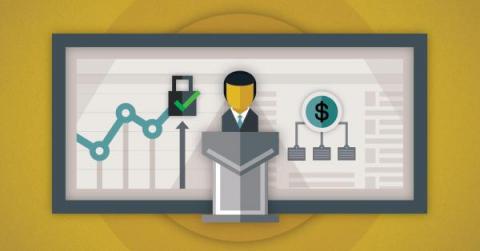Security | Threat Detection | Cyberattacks | DevSecOps | Compliance
Latest News
What is Fourth-Party Risk?
Outsourcing is a critical part of business management and an important ingredient in business growth. One business outsources some task to another — but that second firm can also delegate some of its own business processes to yet another company. That last company then becomes a fourth-party to the first. As the role of fourth-party vendors expands, having a vendor risk management strategy in place becomes key to organizational success.
How Data-Centric Security Models Build Cyber Resiliency
A data-centric security model moves your cybersecurity away from protecting the place where your data is stored to focus instead on securing the data itself. With cloud computing, there no longer is a single perimeter within which to secure your sensitive information. By protecting the data itself, you assure that no matter where the data goes, your organization is protected against cyber threats.
Security vs. Compliance: Understanding the Differences
As cyberattacks continue to proliferate, it’s clear that organizations must be prepared from both cybersecurity and compliance standpoints. It’s critical, however, to understand that while data security and compliance are both important for risk management and the prevention and mitigation of cyber attacks, the two concepts are definitely not the same.
How to Manage Risk With Internal Control Monitoring
Strong, effective internal controls are crucial to developing an efficient operating environment that drives business growth. Good internal control activities can help organizations deliver value to stakeholders and achieve strategic objectives, while also assuring compliance with applicable laws, regulations, and industry best practices. This guide will take a deeper look into internal controls monitoring, along with suggestions for how to make the process easier.
4 Reasons Why Cybersecurity is Important in Banking
Organized cybercriminals are leaving traditional bank robbers in the dust. Nowadays, the banking sector’s most significant security concerns come in the form of online threats. Banks and other financial institutions process millions of transactions daily, with the majority of the transactions done via digital payment transfer platforms. For that reason, banks have become enticing targets for cybercriminals.
Avoiding Cyber Security False Positives
Today’s organizations are vulnerable to all kinds of cyberattacks, which NIST (the National Institute of Standards & Technology) defines as an event that disrupts, disables, destroys, or maliciously controls a computing environment, destroys data integrity, or steals controlled information. Expert security teams know that attackers might compromise the enterprise network, systems, or applications; or steal data at any time through any number of means.
What is Privileged Access Management (PAM)? Definition & Examples
As organizations migrate to the cloud and adopt more “as-a-Service” technologies, identity and access have become the perimeter. Remote workforces mean that limiting access according to the principle of least privilege is a fundamental security control. As part of securing applications and networks, organizations need to focus on users with privileged access because they pose greater insider and credential theft risks.
Breaking it Down: The Difference Between InfoSec Compliance Types
Compliance is an essential part of any business. From a corporate perspective, it can be defined as ensuring your company and employees follow all laws, regulations, standards, policies and ethical practices that apply to your organization. In the context of information security, it means ensuring your organization meets the standards for data privacy and security that apply to your specific industry.
Risk Control Measures That Work
Conducting a regular risk assessment is an integral part of any organization’s overall risk management program — and sometimes even a legal requirement, depending on your industry, contractual obligations, or the number of persons you employ. A risk assessment is the systematic process of identifying threats or hazards in your work environment, evaluating the potential severity of those risks, and then implementing reasonable control measures to mitigate or remediate the risks.





